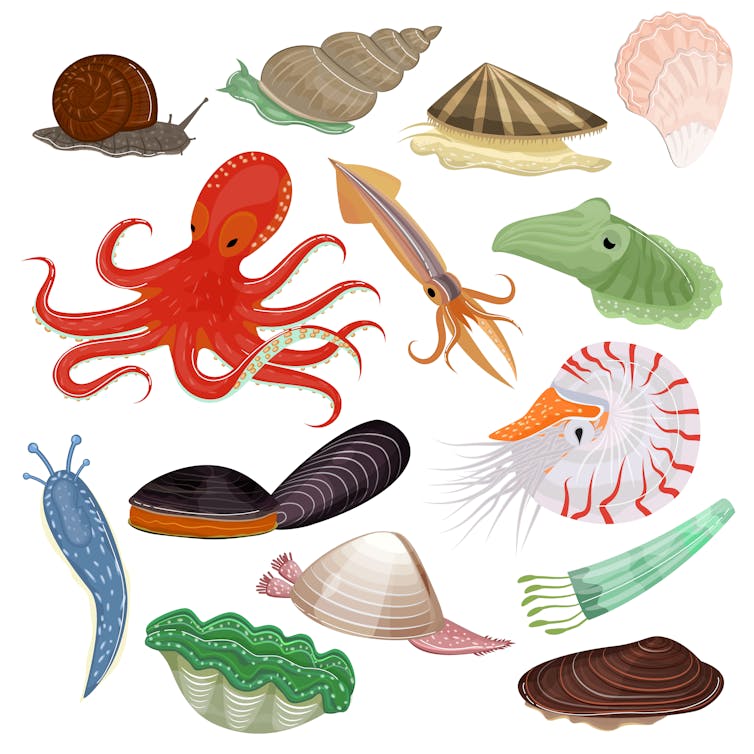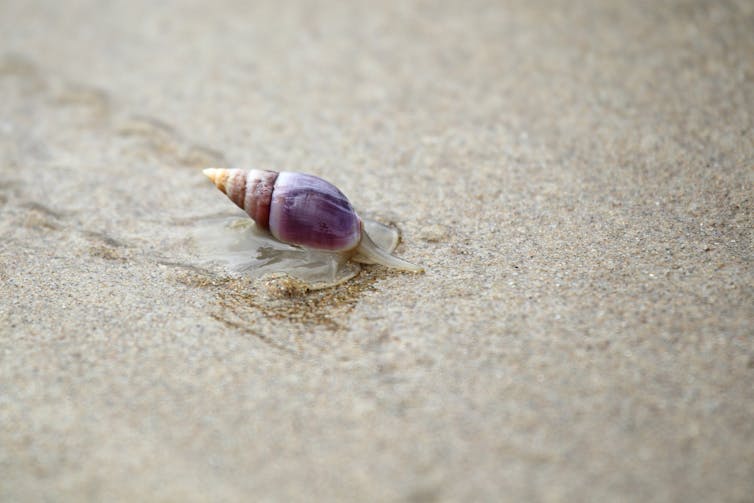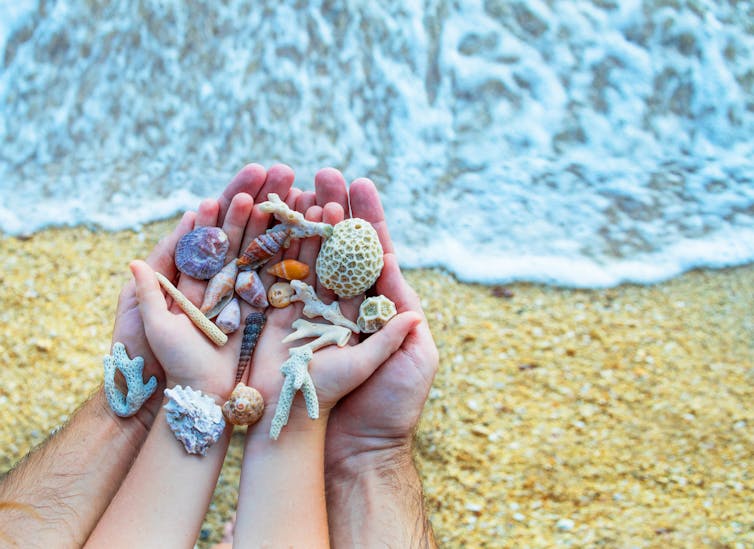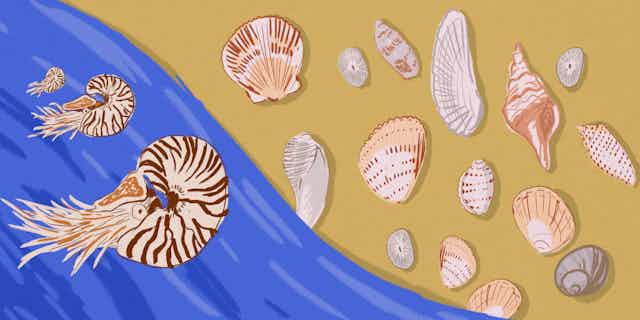Curious Kids is a series for children. If you have a question you’d like an expert to answer, send it to curiouskids@theconversation.edu.au You might also like the podcast Imagine This, a co-production between ABC KIDS listen and The Conversation, based on Curious Kids.
How do shells get made? – Ida, age 6.
Thank you, Ida, for this excellent question. It is good that you are noticing the world around you and asking questions about how it came to be that way.
Common types of shells include seashells, land snail shells, turtle shells or even crab shells. All those animals make their shells in different ways, but my research is all about the sea so today we will focus on seashells.
All those seashells you find on the beach were actually once home to small, soft-bodied creatures called molluscs. Clams, pipis, scallops, mussels and oysters are all different types of molluscs.
Not all molluscs have shells. For example, an octopus is also a mollusc and it doesn’t have a shell.

But the molluscs who do have shells have to build their own shell from scratch. And they keep building it their whole life.
Read more: Curious Kids: Why don't dogs live as long as humans?
How to build a shell
A few days after baby molluscs come out from tiny eggs, they start building their shell, layer after layer.
They use salt and chemicals from the sea (such as calcium and carbonate). They also use other ingredients from their own bodies (such as special chemicals called proteins that help them build the shell).
The part of the mollusc’s body that is in charge of building the shell is called the “mantle”. The mantle builds a kind of frame first, using proteins to make it very strong. It then fills it in with calcium and carbonate. These are some of the same chemicals your body uses to make your bones.
To make space for their growing body, molluscs have to gradually enlarge and extend their shells by adding new layers of those building blocks – calcium, carbonate and proteins.
The newest part of the sea snail’s shell, for example, is around the opening where the animal pokes out.

Seashells are important for the planet
If damaged, the mollusc’s body can produce more proteins, calcium and carbonate to repair the broken part of the shell.
When a mollusc dies, the soft body disappears but its shell remains and eventually washes up on the shore. This is how seashells end up on the beach.
As you know, there are many types of seashells out there and lots of different shapes, sizes and colours of shell.
Over time, molluscs have grown to have the type of shell that helps it best survive in its environment. For example, some shells help protect the mollusc against animals that want to eat it, while others are designed to make it easier for the mollusc to dig down fast to get away. The colour of the shell depends mainly on what the mollusc has eaten.

Before you collect seashells from the beach, think about how important they are to the planet.
Seashells may not be home to molluscs anymore, but they can still be used as homes by hermit crabs or young fish. Birds also use shells to build their nests. So you can see, some animals need the shells more than we do.
A good choice is to take pictures of them instead of taking them home!
Read more: Curious Kids: why are some shells smooth and some shells corrugated?
Hello, curious kids! Have you got a question you’d like an expert to answer? Ask an adult to send your question to curiouskids@theconversation.edu.au

Please tell us your name, age and which city you live in. We won’t be able to answer every question but we will do our best.

